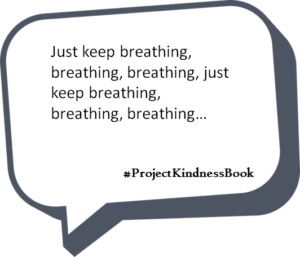Breathing fuels your muscles, so practice breathing!
Last week when I was working out, I was thinking about how important and helpful it is to know what breathing pattern works best for your body, which highly depends on the person and the exercise. If you understand the importance of your breathing during exercise, you will be more likely to succeed and get through your workout. It’s something that I have practiced before (as odd as that may sound) because without proper breathing you cannot fully conquer a workout. Working out is as much about breathing as it is getting your heart rate up and moving your body because breathing fuels your muscles and keeps your body going during your workout.
Here are a few tips on breathing that will help you get through your workout more efficiently. See the chart below for a visual that will help explain the process of how and why breathing matters during your workout.
1. Remember that breathing gives your muscles the energy they need to keep up with the pace, speed, and challenge of your workout. Think of it like this: similar to consuming food to keep your body going and nourished, breathing keeps your muscles going when active. Putting junk food such as chips, cookies, sugary drinks, etc into your body makes your body feel lethargic, energy deprived, and lazy while breathing poorly such as taking shallow or short breaths, holding your breath, or not breathing in through your nose and out through your mouth when you exercise does the same thing to your muscles that poor eating does to your body. It makes it harder for your muscles to get through the workout just like junk food makes it harder for your body to function properly and can create problems such as diabetes, heart attacks, and other health related problems. If you do not practice breathing properly you can face shortness of breath during exercise, asthmatic symptoms, fainting, dizziness, or even headaches.
| Breathing (Deep, steady breaths) | → | Energy to fuel muscles | → | Assists YOU with keeping steady, consistent pace | → | Helps challenge and push you farther | → | See better results over time |
2. Deep breathing. Find your breathing pattern and what will work best for you during your workout. The best way to do this is to practice breathing at your normal, resting heart rate to recognize how fast, slow, deep, or shallow your breaths are. Then, consider taking deep breaths which help get more oxygen to your muscles. It is important to be aware of how you breath because this will help you feel more at ease when you exercise as well as ensure you have enough energy to continue through your workout without experiencing dizziness, headaches, or even fainting. Realize that it can often times be a learning curve to change your breathing pattern so be patient. Lastly, as a quick tip, if you ever get to a point where you feel you have reached the peak of your workout or need a quick dose of energy, sometimes taking one big deep breath will help you regain momentum to push forward.
3. Breathing patterns can change based on the type and intensity of the exercise and workout you are performing. For example, cardio workouts will require a more rigorous breathing pattern to keep up with the movement, speed, and intensity of your workout. In yoga, you can practice breathing that is similar to mediation and slow breathing techniques that will have a calming effect on your mind and body. Keep this in mind while working out so that you are getting the maximum benefits during your workout (i.e. burning max calories during cardio workouts and gaining ease and relaxation during yoga workouts). These are just examples, there are many other types of workouts that you can adjust your breathing for based on the speed, length, intensity, and movement.
It may seem hard to believe that something as involuntary and regular to us as breathing can impact our workout so much, but proper breathing is key to help you maximize your results and maintain a safe workout. Shall I say, happy breath-ercising?
~jj

